| TREES AND
SHRUBS OF ACADIA NATIONAL PARK AND VICINITY |
|---|
| 6 Page Laminated Guide |
| Outside 3 Pages Opens to 11" by 25" |
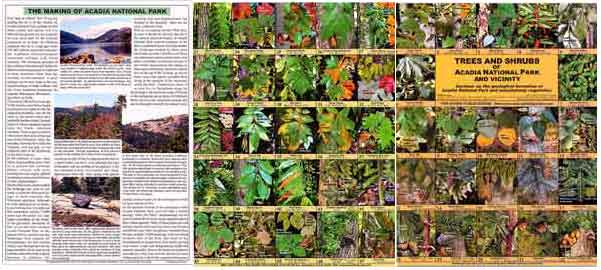 |
| Acadia Nat'l Park
Geology Outside page, 8" by 11". Folds inside. |
Back Page Folds to 8.5" by 11". |
Front Page Folds to 8.5" by 11". |
|---|
|
|
|
|---|---|
| THE MAKING OF ACADIA NATIONAL PARK | |
| Close-up Of Upper Left Corner | Page Description |
 |
|
|
|
||
| Typical Species' Photos | ||
| (Actual size approximately 1.7" by 2") | ||
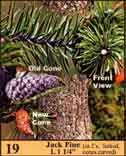 |
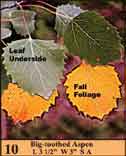 |
These photos are representative of the 47 species photos contained in this guide. Most trees and even some shrubs found in and around the Park are included. Excluded are ornamentals (although some are included when they resemble native species) and trees considered rare and unlikely to be seen. The species' photos show as much visible information as possible, including seeds, fruit, trunks and fall color, if pertinent. |
| Photo Caption Information |
|---|
|
Under the common name, leaf characteristics and measurements are listed. The legend (in inches) is as follows: L=Length of leaf/needle, Ltl=Length of leaflet, W=Width of leaf, Wtl=Width of leaflet, C=Compound leaf, S=Simple leaf, A=Alternate leaf arrangement, O=Opposite leaf arrangement; Additional comments refer to needles or leaves. The Jack Pine photo caption above says "(in 2's, forked, cones curved)" referring to the needles when not indicated. |
| Inside 3 Pages Opens to 11" by 25" |
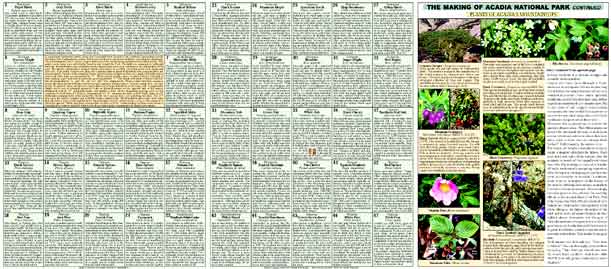 |
|
|
|
| Text Blocks | |
| (Actual size approximately 1.7" by 2.2") | |
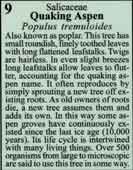 |
The first two inside pages contain text boxes (see sample to left) corresponding to each species pictured on the front. These provide family, common and scientific name, identification aids and often something of the species' role in nature and plant communities. Pages are arranged by tree distribution. SAMPLE OF QUAKING ASPEN TEXT: Also known as poplar. This tree has small roundish, finely toothed leaves with long flattened leaflets. Twigs are hairless. In even slight breezes long leafstalks allow leaves to flutter, accounting for the quaking aspen name. It often reproduces by simply sprouting a new tree off existing roots. As old owners of roots die, a new tree assumes them and adds its own. In this way some aspen groves have continuously existed since the last ice age (10,000 years). Its life cycle is intertwined with many living things. Over 500 organisms from large to microscopic are said to use this tree in some way. |
|
|
|
| PLANTS OF ACADIA'S MOUNTAINTOPS | |
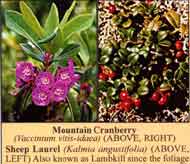 |
|